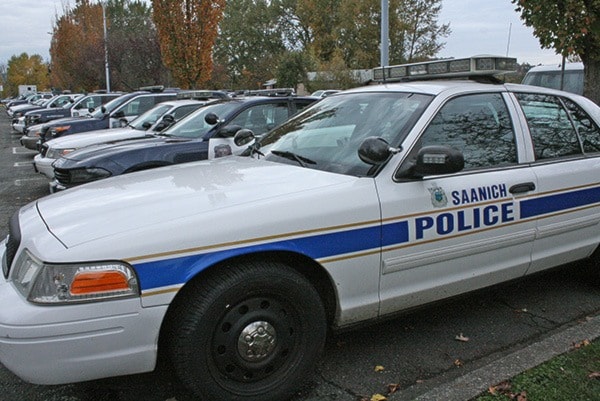Saanich Police plans to purchase devices that would allow officers to administer a medication against the potentially deadly effects of illicit opioid overdoses.
Acting Sgt. Jereme Leslie of the Saanich Police said the department anticipates “purchasing naloxone (hydrochloride) for our first line responders in the near future, once policy and training initiatives have been decided.”
According to Health Canada, naloxone can stop or reverse the effects of an overdose caused by the consumption of opioids. Drugs in this category include heroin, morphine, methadone and fentanyl. Specifically, naloxone counteracts life-threatening depression of the central nervous system and respiratory system during an opioid overdose, allowing overdose victims to breathe normally. The drug only works on humans when they have opioids in their system. So the medication is ineffective if opioids are absent.
It is not clear yet how Saanich Police will administer this medication. First responders elsewhere have administered it through needle or a nasal spray.
“Once research has been completed and policy is implemented, we’ll be able to discuss the use by Saanich Police,” said Leslie,” who is also uncertain of the cost.
“I don’t have a cost or what budget this would come from at this point,” he said.
First responders with the Saanich Fire Department have been carrying the life-saving medication since July of this year.
“As first responders, Saanich firefighters are often the first on scene of opioid overdose emergencies,” said Dan Wood, assistant deputy chief, at the time. “In these cases time is of the essence, and having the ability to administer naloxone as soon as possible will help our firefighters to save lives.”
Some months later, Wood said in an interview that the “use of naloxone has given us quite an advantage” in responding to drug overdoses caused by opioids.
Wood pegged the up-front cost of the program including training at $2,500. Estimated annual costs vary around $500. Each unit of the medication has a shelf-life of about eight to 12 months.
The increased local use of the medication is part of a larger provincial response. In April of this year, the provincial government declared a public health emergency after a rise in deaths from drug overdoses.
According to statistics from the Ministry of Public Safety released last month, 555 people died from drug overdoses during the first nine of months of 2016.
The ministry says fentanyl remains the major contributor to these deaths, having been detected in 60 per cent of cases.
The Coroner’s Service of B.C. is urging users to take harm reduction measures.
They include never using illicit drugs alone and having naloxone available to counteract an overdose if necessary.
Since declaring a public health emergency, the province has also created a dedicated task force. As part of efforts to fight this epidemic, the Health Ministry approved a request to deregulate and unschedule naloxone, allowing the life-saving overdose treatment to be sold at more locations.
More than 2,100 no-charge take-home naloxone kits have been used to reverse overdoses out of more than 13,700 distributed.
Posters and now videos are being released to make recreational drug users more aware of the risks they face.
